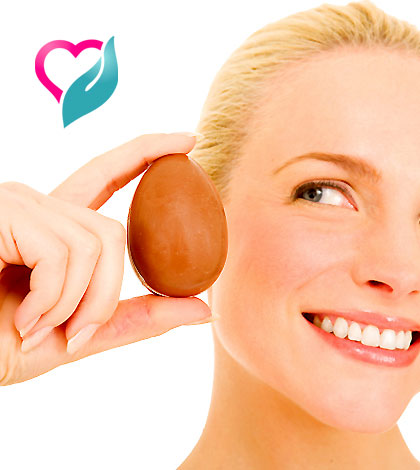Eggshell calcium is one of the best natural sources of calcium, and it is easier for human body to digest and absorb.
Recent research work reported that eggshell calcium has a positive effect on bone mineral density. Laboratory tests were made to measure the bone density of a group those who took eggshell calcium than others those who do not.
[wp_ad_camp_1]
The ideal bone-building combination of eggshell calcium and vitamin D3 was also well documented in different studies. Researchers at the Japan Women’s University, Tokyo studied a combination of vitamin D3 and eggshell powder in animals with osteoporosis. Not only was the eggshell powder with vitamin D3 able to improve bone mineral density, but it did it without significantly increasing blood calcium levels.
Calcium is the most abundant mineral in our body. While most of our calcium resides in our bones and teeth, it’s also important for muscle contraction, nerve health, enzyme activity and cell formation.
[wp_ad_camp_4]
Human body requires ample, daily amounts of calcium for its proper function. If it is not supplied the system will pull excess stores from our teeth and bones which may result in weakening the strength of bones and teeth. Take plenty of calcium especially if you are pregnant or nursing mother.
What is the required dosage?
Most people require a minimum of 400 mgs per day of calcium, in addition to calcium from other food sources, so you would take 1/2 teaspoon of the powder per day. Also take 400 mgs of magnesium citrate at the same time. Calcium and magnesium need to be taken in at least equal amounts, and some people require more magnesium than calcium depending upon how much they obtain from their diet.
One whole medium sized eggshell makes about one teaspoon of powder, which yields about 750 – 800 mgs of elemental calcium plus other microelements, i.e. magnesium, boron, copper, iron, manganese, molybdenum, sulphur, silicon, zinc, etc. There are 27 elements in total. The composition of an eggshell is very similar to that of our bones and teeth.
It is best to take calcium and magnesium with foods to help absorb them.
How to make powdered Eggshells
Wash empty eggshells without removing the white membrane which contains nutrients for joints to fight arthritis, in warm water until all of the egg white is removed. Dry the shells thoroughly.
Break the eggshells, and grind them to into a fine powder in a food processor, blender or coffee grinder. Store it in a covered glass jar or container. Keep it in a dry place, like the kitchen cupboard.
[wp_ad_camp_2]
How to take eggshell calcium
Put 1/2 teaspoon of powdered eggshell into a small dish (approximately 4 1/2 to 5 1/2 inches across) 1/2 teaspoon equals approximately 400 mgs of elemental calcium.
Add the juice of 1/2 a lemon (freshly squeezed), and mix well it will start to bubble and foam, which is what is supposed to happen.
Leave it at room temperature for 6 hours the longer you leave it the less gritty it will be, but do not leave it longer than 12 hours.
It can be taken by the spoonfuls, followed by mouthfuls of water to wash it down. It is not sour tasting. In fact the taste is quite pleasant.
Also take 400 mgs of magnesium citrate at the same time.
Take no more than one teaspoon per day initially because it can be very powerful. Start slowly. The amount may be gradually increased over time.
Different uses of eggshells
1) Give your hens and pets a calcium boost: Eggshells contain 95% calcium, and hens need calcium to lay eggs that have those strong shells. There is nothing unhealthy about feeding your hens and pets with eggshells. Adding pulverized eggshells to their food provides extra calcium for bone health.
2) Give yourself a calcium boost: Consuming calcium from eggshells can help you, too. A clinical research has revealed that eggshell consumption helped stop bone loss in postmenopausal women.
While you can consume pulverized eggshells for added calcium, remember that calcium amounts greatly in shells, so there is no way to tell exactly how much calcium you are getting. Be sure you bake the shells before consuming to prevent ingesting any bacteria if you haven’t washed the shell before eating the egg.
3) Incorporate them into your soil: It’s a great practice to add ground eggshells into your garden soil. But realize that it takes awhile for those shells to break down enough for the calcium to be available to your plants. In fact, eggshells can take many years to decompose fully and it will take several years to see the benefits of those eggshell additions to soil.
4) Keep garden critters at bay: Slugs are slippery little devils, and they dislike the chalky sharpness of ground eggshells. Cutworms don’t like it, either. Sprinkle the eggshell around plants like tomatoes, peppers, broccoli, and cabbage to keep their stems safe and destructive critters away. Make sure you cover the surface of the soil around the entire stem.
5) Clean your pots and pans: Yes, you can grind your eggshells into a powder and use it as an abrasive. But, it being an abrasive and all, it will scratch! I’ve used this for especially stubborn spots on cast iron pans or stainless steel (on the insides). Don’t use this on any surface that you want to see a scratch on.
6) Make your coffee sweeter: Adding crushed eggshells to your coffee grounds helps to lessen the acidity of your coffee. Then you can toss the used grounds and eggshells in your compost bin. Better yet, toss them both into your garden soil! The eggshells have the calcium, but the coffee grounds provide the nitrogen.
[wp_ad_camp_3]
Image courtesy: naturalhealthystandard.com , alive.com , tumblr.com





























